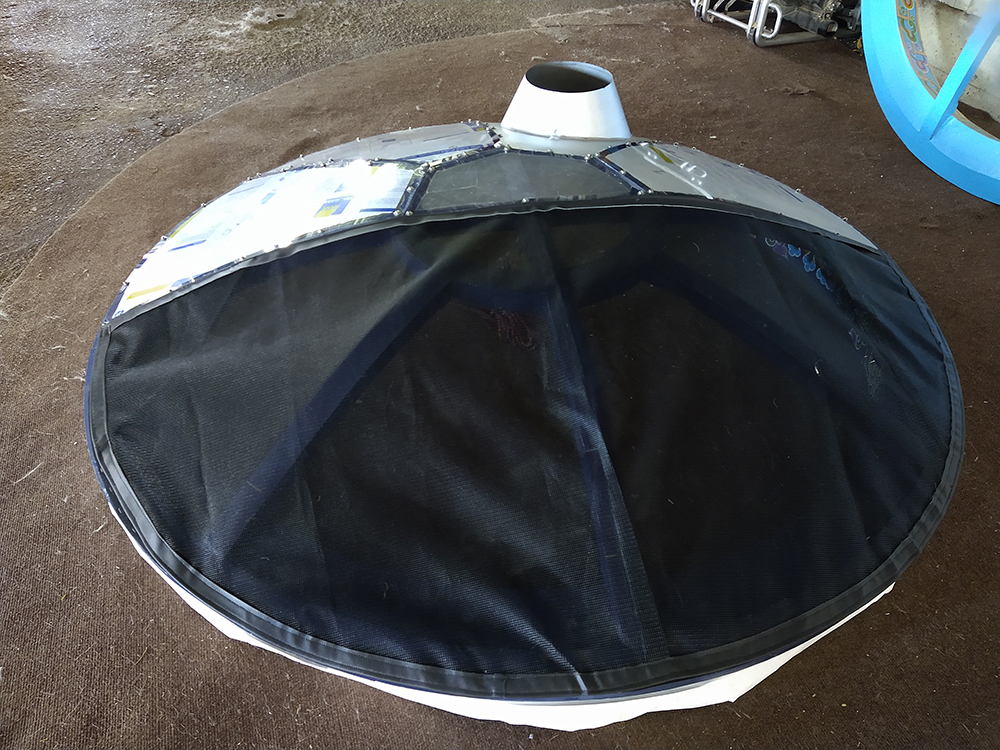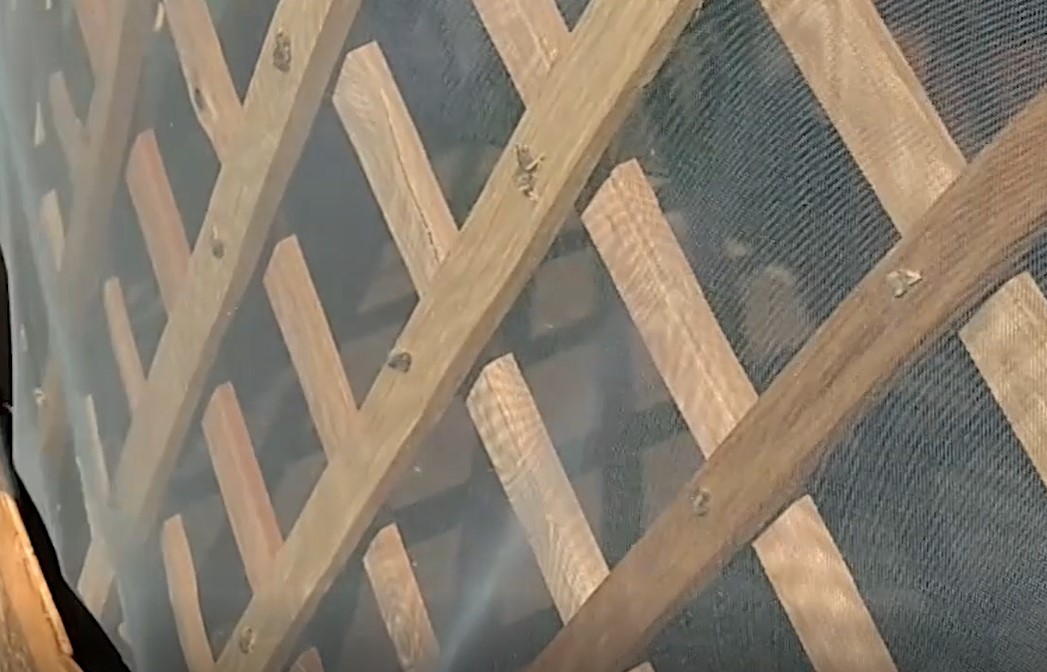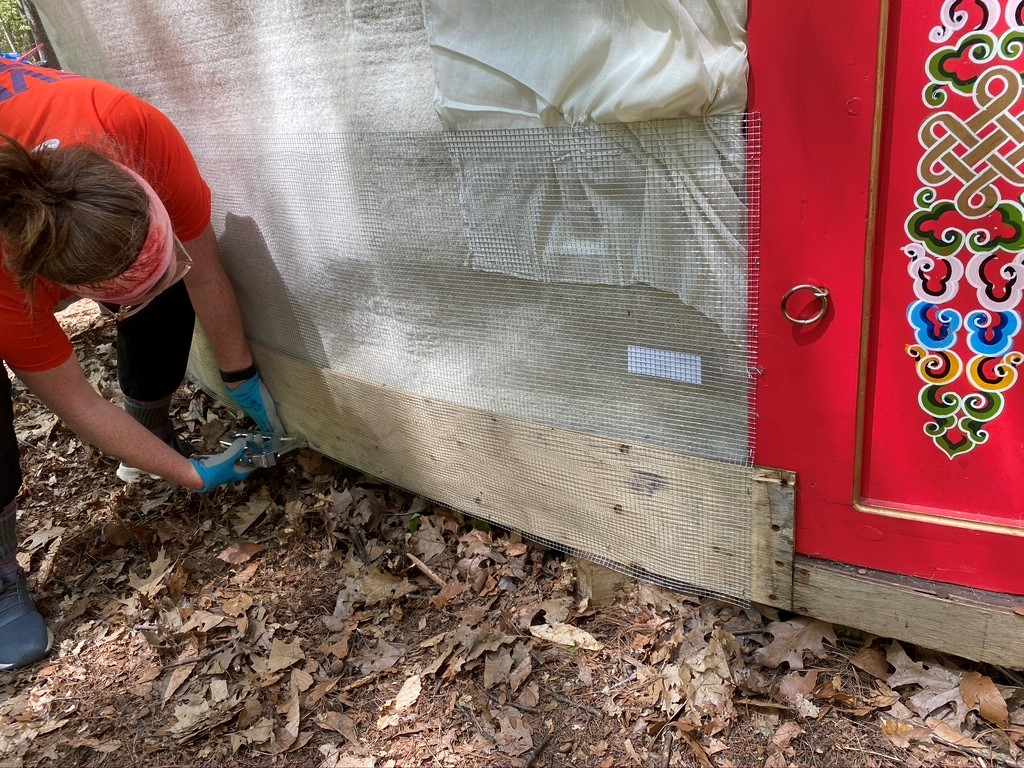Mitigating Bugs and Rodents
Bugs:



Netting:
Mosquito netting can be a real lifesaver in terms of keeping your yurt comfortable and as bug-free as possible. Here’s where you can add it for easy protection:
Toono netting: Install mosquito netting on the open half of the toono (You can also purchase mosquito netting from us for the toono) Our netting is installed using Velcro. The Velcro allows you to easily take the netting on and off as needed.
Netting for the walls: Want to lift the covers of your yurt to allow for ventilation on a hot sunny day? Just add mosquito netting around the base of the yurt walls. No need to cover the entire wall, but at least 20” of netting coverage is ideal.
Netting for the door: You can add netting to the interior door windows, allowing you to leave the solid exterior panel open during the summer without the risk of bugs infesting your yurt. You can also put the upper or lower pane of the door on hinges and add netting!
Keep windows and doors closed whenever possible. If your door has a frame, you can add bug netting by stapling it to the frame.
Moths:
Cedar repels moths if it has a strong enough odor. Look for it in the form of blocks, balls, hangers, shingles or boxes and sand it with sandpaper every few months to revive the scent. You can purchase moth-repellent sachets, but it’s also easy to make your own. Fill fabric pouches, tea bags, wiffle balls, or just a bowl with moth-repellent herbs or essential oils like lavender, rosemary, mint, thyme, cloves, peppercorns, lemon, eucalyptus, and ginseng. Refresh every few months, and enjoy the bonus of a nice-smelling yurt!
Ingredients: Natural Mothballs
- 2 ounces each of dried rosemary and mint
- 1 ounce each of dried thyme and ginseng
- 8 ounces of whole cloves
A great natural alternative are Parasitic wasps (Trichogramma). These tiny (1mm) wasps are harmless to humans and can be bought as “living organism cards”. The female actively searches for the moth eggs to lay her own eggs inside. Once parasitized, the trichogram larva grows there and feeds on the future developing larva of the moth. A new adult trichogram will emerge from the egg after 2 weeks. When there are more moths, the trichograms disappear naturally.
Around your Property:
This one requires a bit of work. Dump or flush out any stagnant water sources in your yard to eliminate reproduction areas. If you have small puddles after a big rain, you can help dry them out quicker by spreading the water around with a broom.
Spray your Canvas:
This one is put last because it will be, we hope, your last resort. It is the only non-environmentally friendly solution we have here but sometimes, when you’re desperate, it’s something to consider. You can screen the canvas with a chemical solution such as “Permanone” and the like. It is odourless and non-toxic to humans. Do know, however, that it may reduce the breathability of the yurt and that the environmental impact is not known but probably not great! You also have to spray it every 6-7 weeks, so it’s not necessarily the most budget-friendly option, either.
Rodents
Install Wire:
Putting a roll of wire around your platform and around the bottom of your felts can make a big difference as it is going to make it much harder for rodents to get in. The wire can be stapled to the rim board of the platform and should go higher than the lower circling rope in order to prevent mice from climbing under the canvas. The lower circling rope must be tight, and the plywood rim could be raised to the level of the circling rope to allow a better squeeze.
Get a Pet:
Cats and mouser-type dogs are great at keeping rodents at bay or getting rid of them. Not really rodent-friendly, but effective and part of the circle of life.
Try Environmentally-Friendly Chemicals:
Using natural moth balls can prevent rodents from coming in and nesting around or under the yurt. Real chemical ones have been proven to work if you prefer to not take any risks.
Bounce sheets apparently may scare away rodents too, but we can’t quite guarantee results yet.
Up and Above:
Elevating the platform and creating a gap between the last stair step and the platform avoiding direct links from the ground to the platform can reduce the likelihood of rodents making a nest in your yurt.
Related Articles
Humidity and Air Circulation
Day to Day Maintenance If your yurt becomes damp or wet for any reason, lighting a fire in your wood stove will help dry it from the inside out. Attention! Propane stoves can actually produce moisture and exacerbate existing moisture issues. Air ...Water Infiltration
There are four major water infiltration areas: the toono, door, floor and covers! Water Coming in from the Toono? Make sure the house wrap is properly installed. The house wrap skirt should be fixed and sealed with caulking under the toono. The urgh ...